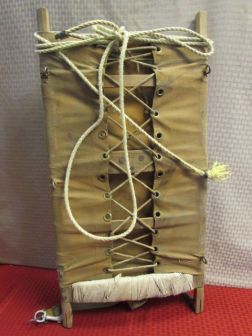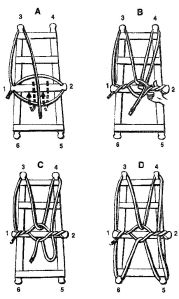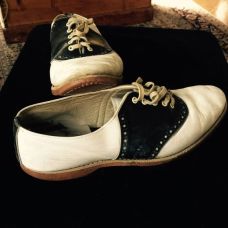Lundy Lake, on the eastern side of the Sierras near Mono Lake, is set in a long narrow cleft eponymously named Lundy Canyon. (‘Eponymous’ is so rarely used, I figured I’d better air it out before it becomes one of those words my aging brain forgets. An adjective meaning ‘of a thing named after a person or thing’. Word for the day.)

It was a short trip, by backpacking standards—only 3 miles in to the abandoned May Lundy Mine. Just right for a family with young kids. Except that the trailhead started at 7830 feet and ended at 9860 feet! That’s 2000 feet of elevation gain in thin high-altitude air, and our family came from L.A. just a few feet above sea level. But the mountains were gorgeous, and we were primed for adventure. Gamely shouldering our old-fashioned packs, we trooped down the trail.
“Down the trail’ is a figure of speech. Up fit better, although the going was not too bad for the first half-mile. But then the trail angled upward. It got harder as it went until we were puffing and huffing. Pop called for a rest stop at a lovely little waterfall surrounded by lush early-season Sierra flowers.
We sat down gratefully, while Mom handed out generous chunks of chocolate, which, for some reason, was the Alaskan ideal for wilderness energy food. And that is when I saw it.
The most remarkable rock. Or so it seemed to my juvenile eyes. It was basalt, about an inch and a half thick, three hand-spans wide and four long, with an irregular shape that bore a startling resemblance (or so I thought) to South America. It even had a ridge down the left-hand side where the Andes Mountains would have been, and a dip for the Amazon Basin.
It doesn’t take much to astonish a kid, and that rock purely amazed me. I showed it to the family. Everybody duly admired my find and nodded as I pointed out the salient features which made this chunk of basalt the most incredible discovery of my young life.
I intended to keep it, of course. I picked up the uneven 34-pound slab and clutched it to my chest, ready to resume the trek with my treasure.
Mom and Pop agreed that it was a most incredible find, and surely I must bring it home. But why carry it all the way up hill and back again? We would be returning this way day after tomorrow, and I could simply collect it then.
I knew perfectly well what my parents were thinking: that I, their notoriously absent-minded child, would forget entirely about it until we were back at the car. And even if I DID remember, it was just one rock among many flat slabs of basalt that littered the slope. I’d never locate the darn thing once I set it back among its less dramatically shaped fellows.
I stowed the rock carefully to one side. While the rest went ahead, I piled a heap of smaller, less-notable rocks across the trail so I wouldn’t forget. And then I caught up.
Because I didn’t forget. But more on that later.


 And the rest of our equipment? The same stuff we camped with, of course! Cotton sleeping bags weighing 8 pounds each—twice today’s inexpensive backpacking bag. Sturdy Spaulding leather-soled shoes, my oldest sister with new ones, my brother’s, mine, and my 5-year-old sister wearing successively more well-worn hand-me-downs. (Don’t be shocked, this was normal in the 50’s and 60’s, most middle-class kids wore hand-me-downs, since a family of 5 was about average.) They made ‘em to LAST, back then. And there were cobbler shops to put little metal bits on to extend wear, and to re-sole them when even those wore through.
And the rest of our equipment? The same stuff we camped with, of course! Cotton sleeping bags weighing 8 pounds each—twice today’s inexpensive backpacking bag. Sturdy Spaulding leather-soled shoes, my oldest sister with new ones, my brother’s, mine, and my 5-year-old sister wearing successively more well-worn hand-me-downs. (Don’t be shocked, this was normal in the 50’s and 60’s, most middle-class kids wore hand-me-downs, since a family of 5 was about average.) They made ‘em to LAST, back then. And there were cobbler shops to put little metal bits on to extend wear, and to re-sole them when even those wore through. A tent, you ask? Good grief, the only one we had was made of canvas and took both my parents to carry it! You didn’t take tents into the wilderness, didn’t we all have a piece of tarp on our packs? Anyway, the chosen destination, fully described to Pop by a co-worker and fellow wilderness enthusiast, had an abandoned mining camp with a couple old buildings we could use. So THAT was solved.
A tent, you ask? Good grief, the only one we had was made of canvas and took both my parents to carry it! You didn’t take tents into the wilderness, didn’t we all have a piece of tarp on our packs? Anyway, the chosen destination, fully described to Pop by a co-worker and fellow wilderness enthusiast, had an abandoned mining camp with a couple old buildings we could use. So THAT was solved.




